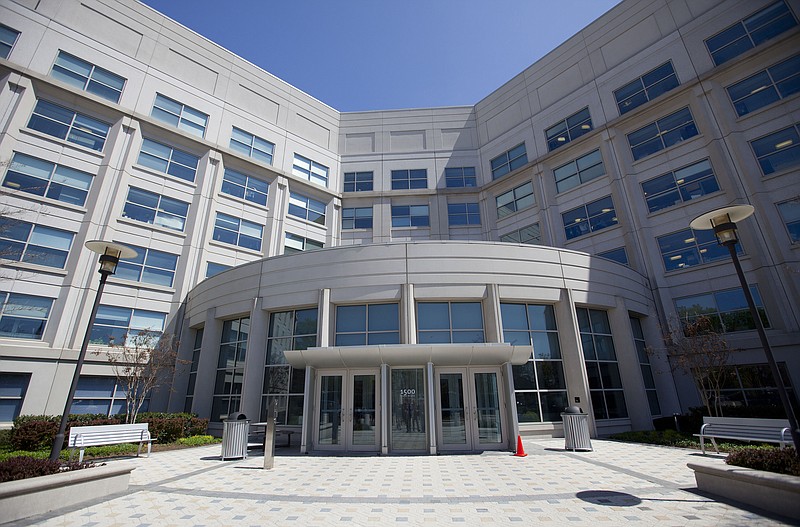WASHINGTON (AP) - A dedicated manhunt by the CIA, the National Security Agency and the military's Joint Special Operations Command has been methodically finding and killing senior militants in Syria and Iraq, in one of the few clear success stories of the U.S. military campaign in those countries.
The drone strikes - separate from the conventional bombing campaign run by U.S. Central Command - have significantly diminished the threat from the Khorasan Group, an al-Qaida cell in Syria that had planned attacks on American aviation, U.S. officials say. The group's leader, Muhsin al-Fadhli, and its top bomb-maker, David Drugeon, were killed this past summer.
Other targeted strikes have taken out senior Islamic State group figures, including its second in command, known as Hajji Mutazz.
In an effort that ramped up over the last year, intelligence analysts and special operators have harnessed an array of satellites, sensors, drones and other technology to track and kill elusive militants across a vast, rugged area of Syria and Iraq, overcoming the lack of a significant U.S. ground presence and the awareness by U.S. targets that they can be found through their use of electronic devices.
The strikes won't defeat the Islamic State, but they are keeping its leadership off balance, a senior defense official involved in planning them said.
"They are constantly having to adjust, which means they don't have a lot of time to sit there and plan large and effective attacks," the official said.
Like others interviewed for this story, the official was not authorized to discuss intelligence matters publicly and would not be quoted by name.
With no regular American presence in the war theater, U.S. intelligence agencies have struggled to determine ground truths about the situation in Syria and Iraq, including the number of Islamic State fighters. The U.S.-led bombing campaign has failed to dislodge the group from its self-declared caliphate across both countries.
But the drone strikes against militant leadership targets in Iraq and Syria show how the U.S. has upped its manhunting prowess in areas without an American embassy or troop presence, said Rep. Adam Schiff of California, senior Democrat on the Intelligence Committee.
As in Pakistan and Yemen, missiles fired from unmanned drones have been the weapons of choice to kill high-value targets in Syria and Iraq. But unlike in Pakistan and Yemen, JSOC, not the CIA, has been pulling the trigger in Syria and Iraq, officials say. JSOC's armed drones operate separately from, but in concert with, a conventional bombing campaign run by U.S. Central Command, which has overall responsibility for the war.
The CIA's Counter Terrorism Center brought its collection and analytical expertise to the hunt for senior militants in close cooperation with JSOC, officials say, with a new focus on achieving a hybrid model that has long been the Obama administration's goal. Although the CIA has carried out the vast majority of drone strikes during the Obama administration, the president has said he wants the military to become the chief instrument of targeted lethal force.
In the latest strike on Sept. 10, the U.S. killed Abu Bakr al-Turkmani, an Islamic State administrative officer, near Tal Afar, Iraq, Pentagon spokesman Peter Cook said. Abu Rahin Aziz, a British national, was killed in a drone strike in July.
The CIA began stepping up efforts to profile militants in Syria in early 2013, even before the Islamic State had seized significant territory. But over the last year, its tracking capacity has improved as the Pentagon has deployed 24-hour overhead coverage allowing the NSA to soak up electronic signals while the National Geospatial-Intelligence Agency (NGA) conducts visual surveillance, officials say. The CIA and Defense Intelligence Agency have stepped up efforts to recruit human sources.
When the goal is to kill the target, the analysts try to establish his "pattern of life," so they will know where and when he will be away from innocents. In recent years, a former CIA counterterrorism targeter said, the agency has developed "a better understanding of what a modern extremist group looks like and how it behaves."
Detailed "human terrain" mapping of Syrian and Iraqi tribal leadership and village structure also helps, said a military targeting analyst with long experience hunting militants in the Middle East.
Manhunts in Syria and Iraq rely on both human and electronic intelligence collection. Although the CIA doesn't routinely insert American officers on the ground, it sends in foreign agents recruited in border countries and cooperates closely with Jordanian, Saudi and Kurdish spy services. There is no shortage of informants who are angry about militants' brutal tactics, officials say.
But the most important factor in locating senior militants has been electronic eavesdropping by the NSA, coupled with overhead imagery, social media analysis and other work by the NGA, officials say. Both agencies are adept at finding people based on electronic signals emitted by communication devices.
Even in a post-Edward Snowden era in which U.S. electronic spying is widely understood, al-Qaida and Islamic State operatives in Syria can't avoid using electronics to communicate, officials say.
"They have to be more visible and more accessible because they have a battlefield role," Schiff said. "They have to interact and communicate in some fashion - they can't just go hide in a cave somewhere."
